“Great things are not done by impulse, but a series of small things brought together.” – Vincent van Gogh
Each person and each garden are unique, and thus unique will be the design solution. Most journeys, though, follow a similar trajectory. You can decide at any time along the way whether you want to proceed to the next phase of the design to accommodate your budget and situation. You will have an input at every stage of the design. You may also want to bring me to the team at an early stage of the planning or building of your new house to ensure seamless integration between indoors and outdoors and minimise the construction disturbance.
Site Visit
Before we meet for the first time, you will be asked to collect your inspirations and fill in a questionnaire, which will help you consolidate the list of wishes for your outdoor space. During the initial meeting at your home we will walk around your garden to evaluate its features and potential, and discuss your vision for development. We will also draft a preliminary budget for the construction. I also conduct an interview to know more about you, your background, and life style. Knowing you better will help me to match the design with needs and personalities of the entire family. After the meeting, you will be sent a summary of your requirements as a written brief along with the design fee proposal.
Site Survey
The future garden has to be thoroughly measured and all the existing features, such as trees, buildings, technical utilities and ground levels precisely recorded on the plan known as the site survey. I can arrange a service from a surveyor engineer who will carry out the survey. In addition, I will gather photographic record of your outdoor space for the site analysis.
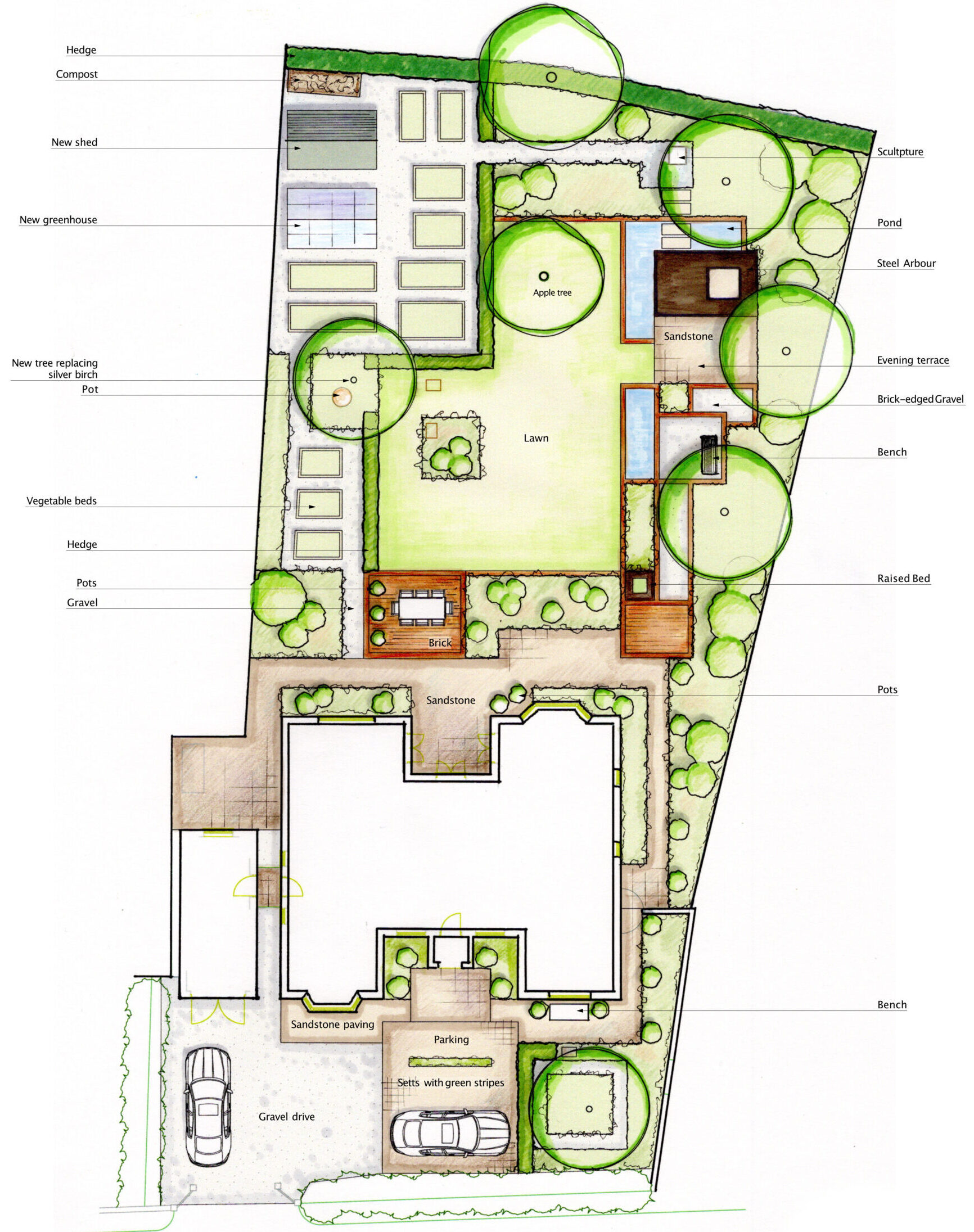
Site Analysis and Concept Plan
I will carefully evaluate the conditions of the site such as sun and shadow patterns throughout the year, prevailing winds, views, and existing vegetation, as well as functional relationships between garden elements to establish the optimal placement of garden features. You will be presented a conceptual diagram and explained my thought process.
This schematic layout is used as a guide to draw a sketch layout plan for the new garden. A set of projection drawings from different viewpoints will help you visualise the design. At this stage we will discuss the changes you may wish to introduce into the final design.
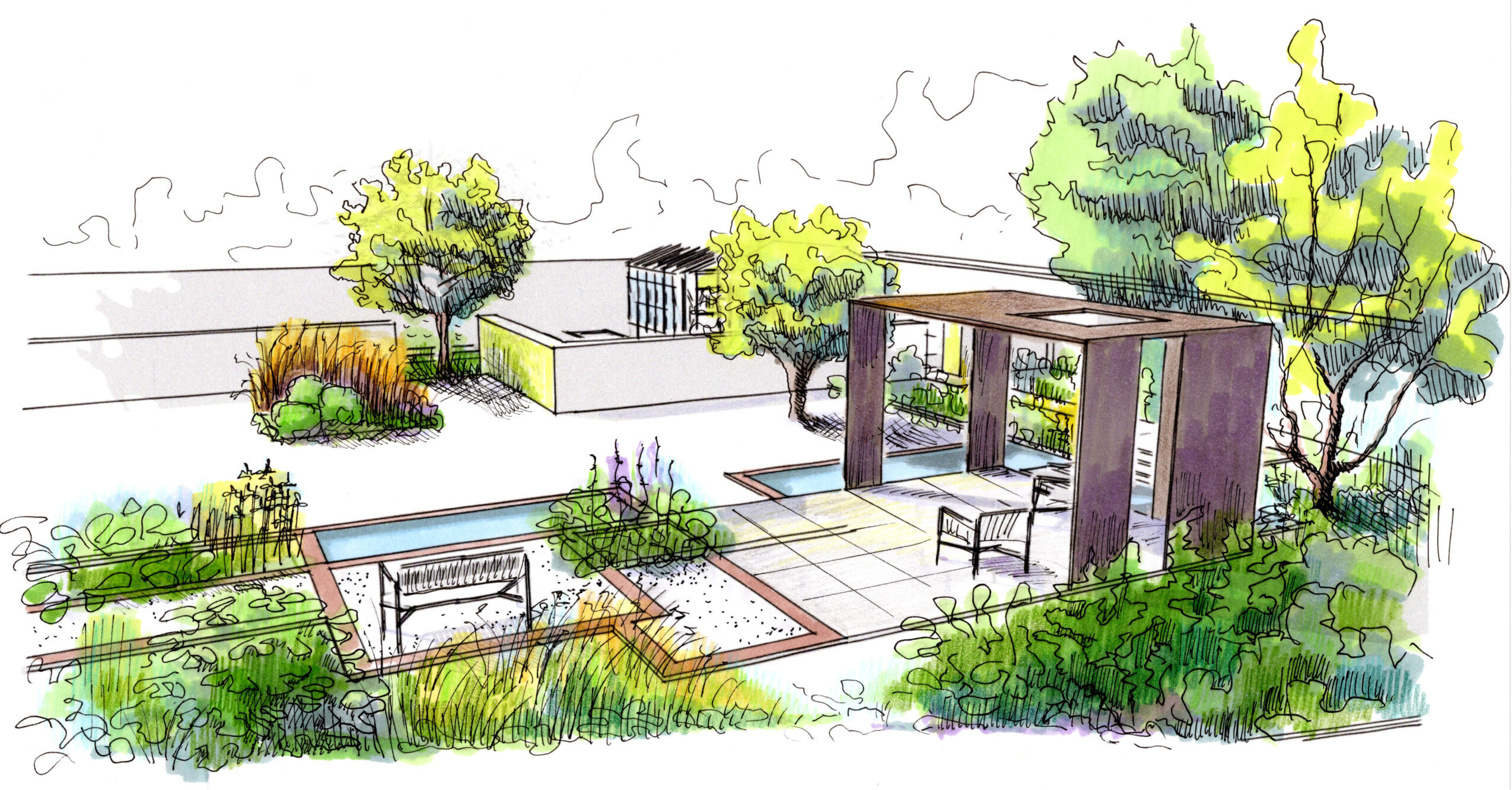
Master plan and creative details
Based on your feedback I will draw the final Master Plan with exact dimensions, setting out information, ground levels, and, if necessary, drainage. At this stage I will also produce detailed technical drawings and specifications listing construction methods and materials to ensure that the design can be implemented according to our vision. These documents are the basis for the chosen landscaper companies to prepare the competitive tender.
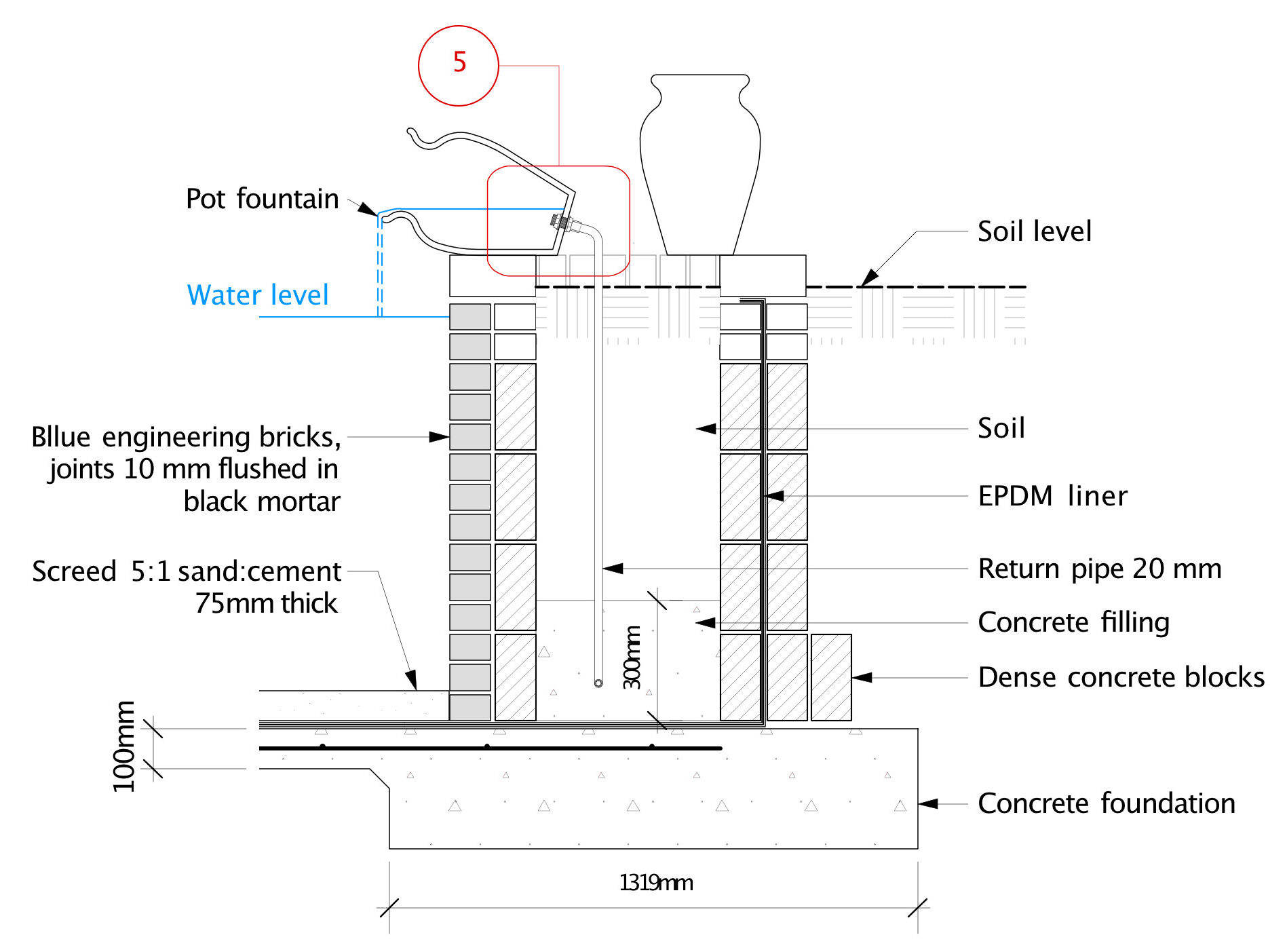
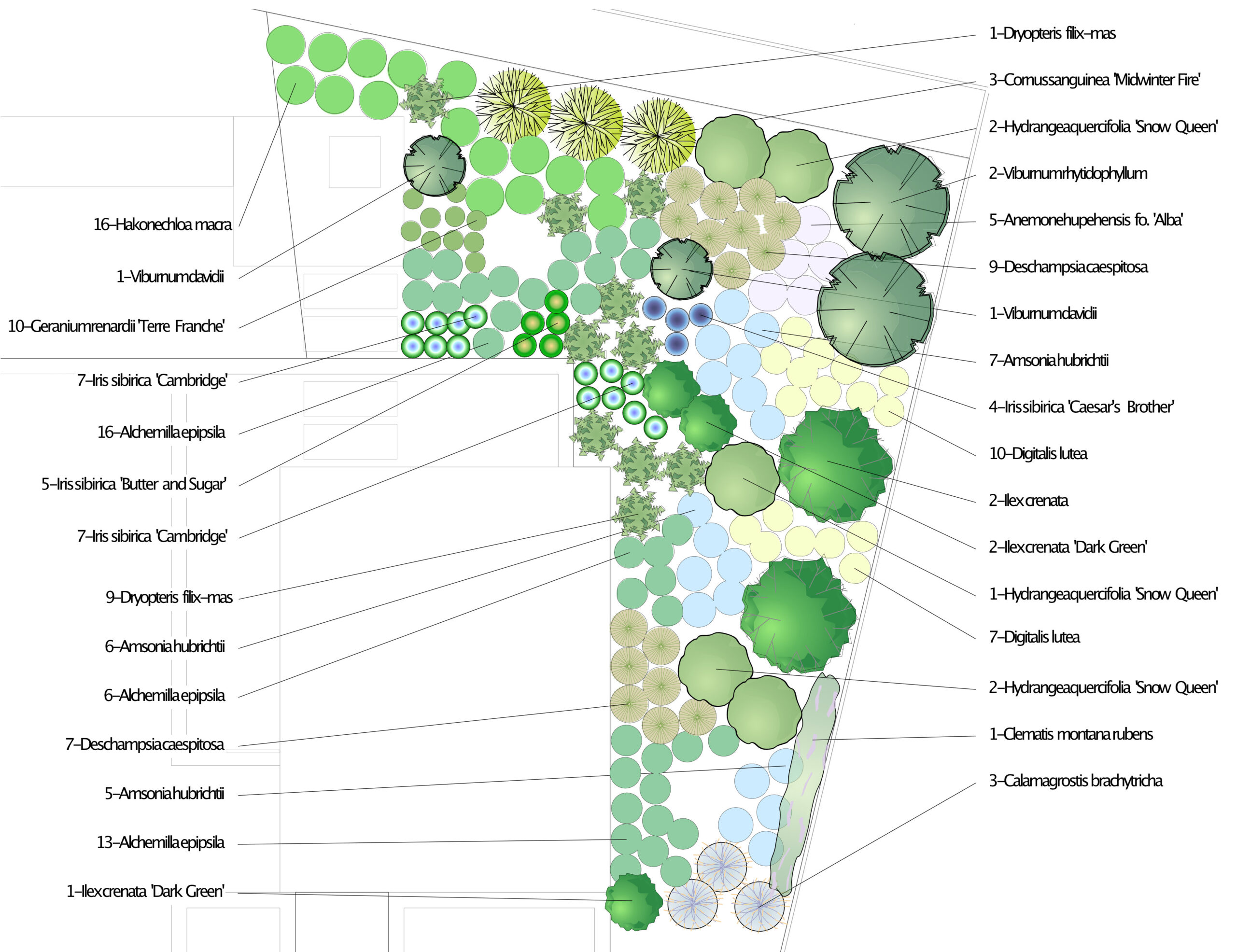
Planting Plans
The conditions of the site, such as soil, aspect, temperature and rainfall during the year, together with your preferences are the basis to choose appropriate plants for the site. Once you approve the selection, I will prepare detailed 2D layout plans showing arrangement of trees, shrubs, perennial plants and bulbs within planting beds, along with schedules listing botanical names, numbers and required sizes of plants to facilitate ordering. If you wish, I can prepare also a yearly maintenance plan which will help you to keep the garden looking beautiful.
Growth
Once your garden is built, it becomes a living and dynamic environment. The stone and metal develop patina, the wood weathers to silvery shades, and the plants jostle for space. The garden is never finished. Some plants are short-lived, some turn out too charismatic and take over less vigorous neighbours; shrubs require skilful pruning to maintain their elegance. Traditional gardens from previous centuries required rigorous and time consuming care to preserve the appearance. In contrast, the modern approach to gardening attempts to develop lower maintenance balanced planting schemes suited to local conditions, which may function more as a community rather than a collection of independent specimen plants. Yet, growth, decay, randomness and change are the inherent qualities of the garden. I may assist you in evaluating and editing the planting design in years after the construction.
Each person and each garden are unique, and thus unique will be the design solution. Most journeys, though, follow a similar trajectory. You can decide at any time along the way whether you want to proceed to the next phase of the design to accommodate your budget and situation. You will have an input at every stage of the design. You may also want to bring me to the team at an early stage of the planning or building of your new house to ensure seamless integration between indoors and outdoors and minimise the construction disturbance.
Before we meet for the first time, you will be asked to collect your inspirations and fill in a questionnaire, which will help you consolidate the list of wishes for your outdoor space. During the initial meeting at your home we will discuss your vision and draft a preliminary budget for the construction. After the meeting, you will be sent a summary of your requirements as a written brief along with the design fee proposal.
The future garden has to be thoroughly measured and all the existing features, such as trees, buildings, technical utilities and ground levels precisely recorded on the plan known as the site survey. I can arrange a service from a surveyor engineer who will carry out the survey. In addition, I will gather photographic record of your outdoor space for the site analysis.
I will carefully evaluate the conditions of the site such as sun and shadow patterns throughout the year, prevailing winds, views, and existing vegetation, as well as functional relationships between garden elements to establish the optimal placement of garden features. You will be presented a conceptual diagram and explained my thought process.
This schematic layout is used as a guide to draw a sketch layout plan for the new garden. A set of projection drawings from different viewpoints will help you visualise the design. At this stage we will discuss the changes you may wish to introduce into the final design.
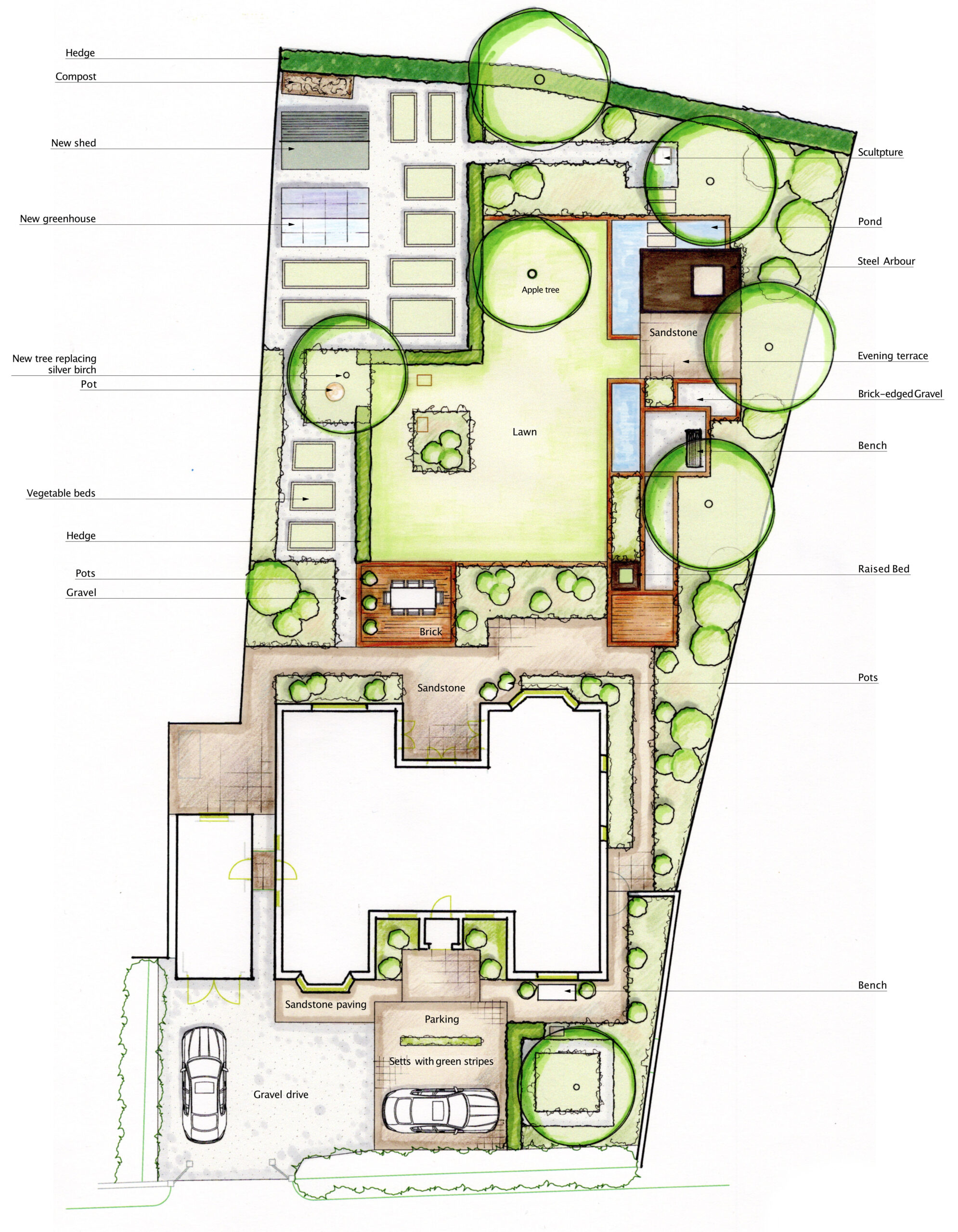
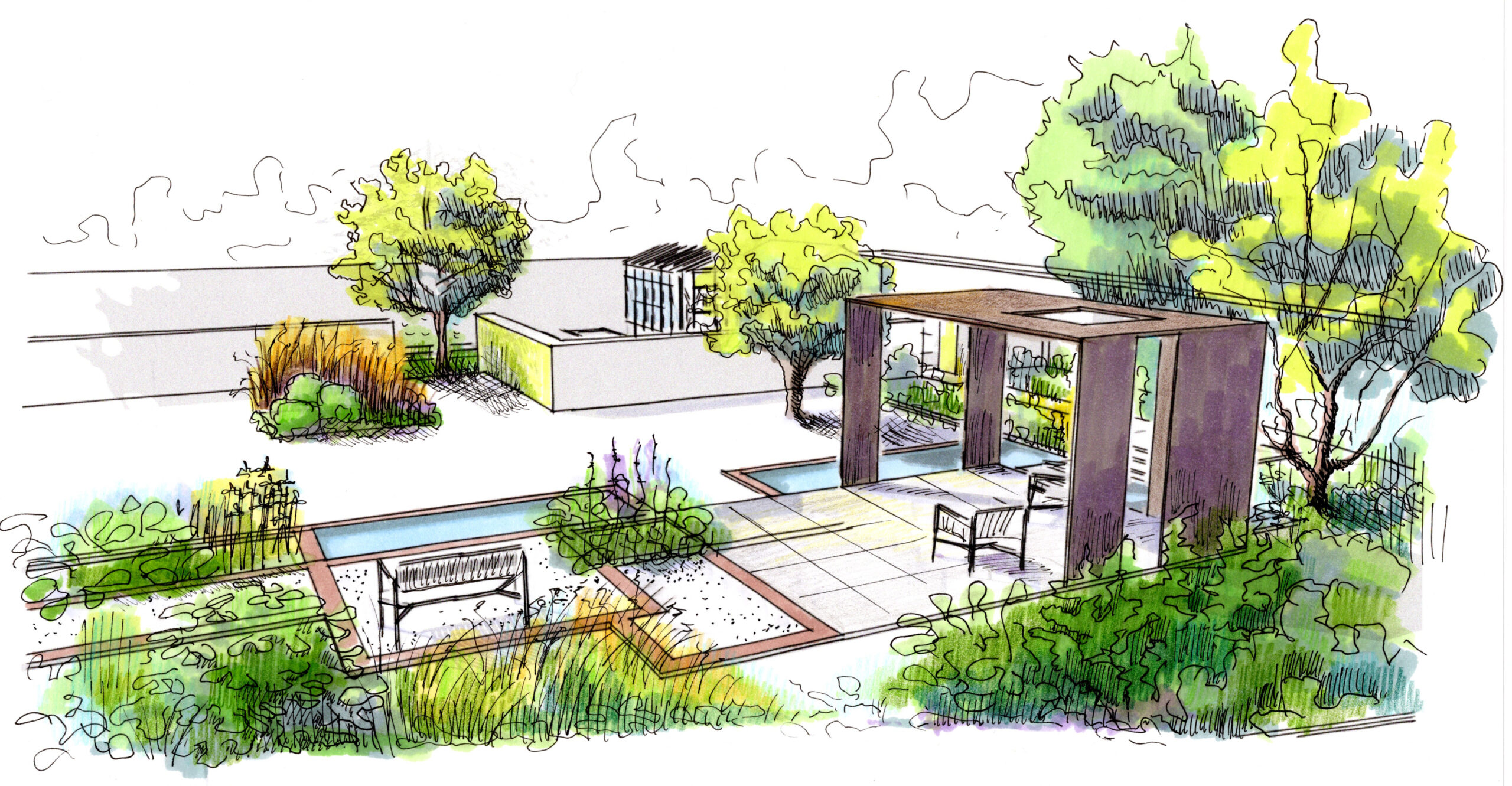
Based on your feedback I will draw the final Master Plan with exact dimensions, setting out information, ground levels, and, if necessary, drainage. At this stage I will also produce detailed technical drawings and specifications listing construction methods and materials to ensure that the design can be implemented according to our vision. These documents are the basis for the chosen landscaper companies to prepare the competitive tender.

The conditions of the site, such as soil, aspect, light, temperature and rainfall during the year, together with your preferences are the basis to choose appropriate plants for the site. Once you approve the selection, I will prepare detailed 2D layout plans showing arrangement of trees, shrubs, perennial plants and bulbs within planting beds, along with schedules listing botanical names, numbers and required sizes of plants to facilitate ordering. If you wish, I can prepare also a yearly maintenance plan which will help you to keep the garden looking beautiful.

Once your garden is built, it becomes a living and dynamic environment. The stone and metal develop patina, the wood weathers to silvery shades, and the plants jostle for space. The garden is never finished. Some plants are short-lived, some turn out too charismatic and take over less vigorous neighbours; shrubs require skilful pruning to maintain their elegance. Traditional gardens from previous centuries required rigorous and time consuming care to preserve the appearance. In contrast, the modern approach to gardening attempts to develop lower maintenance balanced planting schemes suited to local conditions, which may function more as a community rather than a collection of independent specimen plants. Yet, growth, decay, randomness and change are the inherent qualities of the garden. I may assist you in evaluating and editing the planting design in years after the construction.


